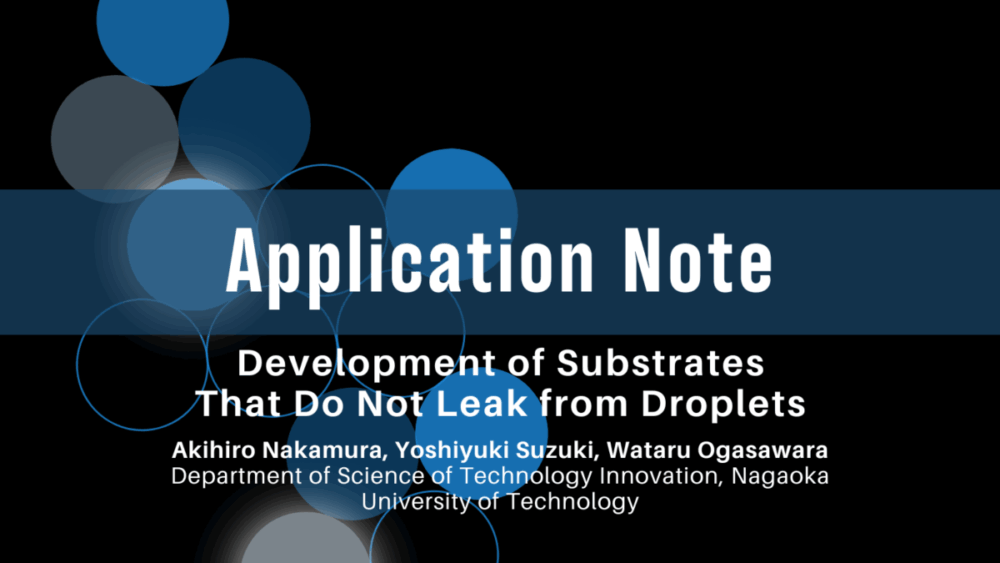We’re thrilled to unveil our latest application notes on cutting-edge droplet technology!
Development of Substrates That Do Not Leak from Droplets
Akihiro Nakamura, Yoshiyuki Suzuki, Wataru Ogasawara (Department of Science of Technology Innovation, Nagaoka University of Technology)
Abstract:
Screening techniques combining droplets and microfluidic devices have attracted attention as tools for ultra-efficient biochemical assays and microbial exploration. In particular, water-in-oil (w/o) droplets with volumes of nL to pL using fluorinated oils as the oil phase have been used for microbial culture and as a site for enzymatic reactions in liquid. Since w/o droplets are compartmentalized by surfactants, substances contained within the droplets may migrate between droplets depending on the substances’ properties. This phenomenon can be a barrier to the detection of enzymatic reactions inside the droplets. For example, 7-amino-4-methylcoumarin (AMC), a derivative of coumarin used as a fluorescent substrate for various compounds such as peptidases/proteases, leaks out from w/o droplets due to its high hydrophobicity. Therefore, AMC has not been used in screening technique involving w/o droplets. In this study, we searched for coumarin compounds that do not leak from w/o droplets and subsequently developed new substrates based on these compounds. In addition, we screened 160,000 droplets at a rate exceeding 100 droplets per second using the developed substrates and detected environmental microbes with peptidase activity, thereby confirming the utility of the droplets. The present study has succeeded in greatly expanding the number of detectable enzyme species in microfluidic systems using w/o droplets. (Reference: A. Nakamura et al., Anal. Chem., 94 (5), 2416–2424, 2022)
To explore the comprehensive details, please complete the form to gain full access to the content.

